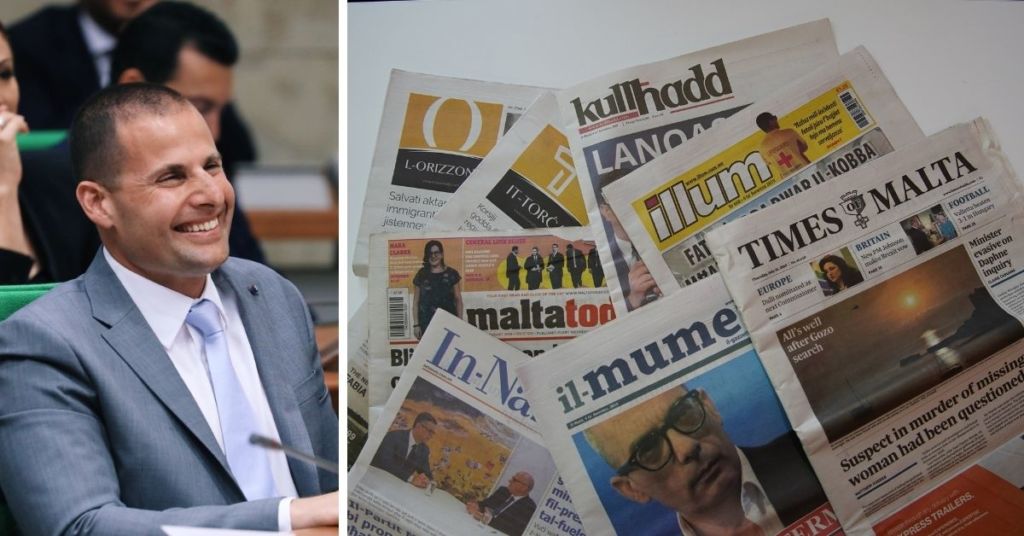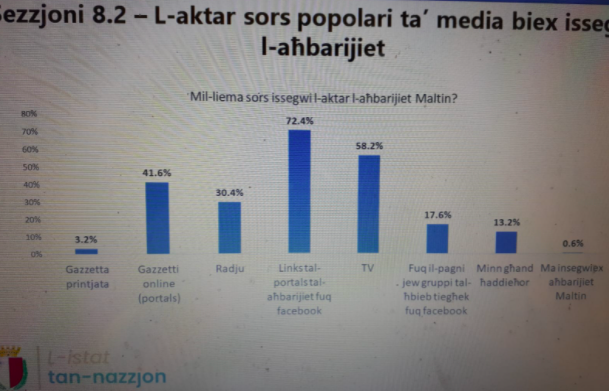Why The €500,000 Rescue Fund For Maltese Newspapers Is A Really Bad Idea

As news consumption habits move further and further online, it seems unusual that the government would actively step in to help media houses continue printing newspapers.
And yet a tidy €500,000 of public funds has now been allocated to the printed press, presumably to help them cope with inflation in the cost of paper without having to increase the price of their product.
Prime Minister Robert Abela has insisted the fund is a move in favour of democracy and the fourth estate but the truth is far more complicated.
Newspapers aren’t only struggling because paper has become more expensive but because the news media landscape has changed dramatically in the age of the internet and social media.
A recent survey by Vincent Marmara on people’s news consumption habits found that only 3% of the nation reads newspapers, which extrapolated would be equivalent to some 13,000 people.
In contrast, 72% of people get their news from links that appear on their social media feeds while 42% visit news websites directly.

A 2021 survey by Vincent Marmara found that 3.2% of people get their news from newspapers
Newspapers are caught in a double-bind, forced to keep a strong online presence to maintain public relevance but all too aware that their online content is essentially competing with their print product for people’s eyeballs. The online version, being both free and easily accessible, is competing at a huge advantage.
As a result, newspaper advertising revenue, which traditionally covered most of the costs of running a newsroom, has declined, as the editors of both Times of Malta and MaltaToday have confirmed.
It is no wonder then that newspapers pleaded with the government for immediate, short-term aid as soon as they were faced with yet another obstacle, this time in the form of paper inflation.
However, the real question should be whether the industry is worth saving and whether it can even be saved in its current form, rather than repurposed.
Rather than pumping money into propping up newspapers that very few people are reading, perhaps the government should focus on incentivising the creation of digital news that people are actually reading.
It should do so like it helps other economic sectors, such as by offering tax incentives, grants to buy new equipment and other schemes to improve their allure.
Maybe that way, the journalism industry can finally be viewed as an industry that has the capacity to flourish rather than one which is on life support and which will die without more and more government funding. Perhaps if the industry regains confidence in its own sustainability and capacity for growth, public perception of it will improve too.
Instead, the government has gone for a bandaid-like fund that raises more questions than answers, such as:

•Will the scheme only be open to registered media houses or to anyone (such as Church organisations, NGOs and businesses) that prints and distributes news leaflets?
•Will every media house that prints newspapers be given a flat sum every month? Will they be given money according to how many newspapers they print every week or how many actual sheets of paper they print every week?
•If so, will there be any kind of auditing to prove that the media houses are actually printing the amount of papers they are alleging to print?
•Will there be any kind of auditing to ensure the media houses are using every cent of this new pool of public funds to compensate for the rise in the price of paper? If they use the money for anything else, such as to help pay their employees’ salaries, that will surely amount to an anti-competitive practice against fully online media that should be investigated by the Competition Office.
•Will political parties be entitled to these funds for their own newspapers even though they owe millions of euro in arrears to the state and refuse to publish their accounts? If so, how does this tally with Finance Minister Clyde Caruana’s plan to exclude tax dodgers from public procurement or will businesses owned by political parties once again receive special treatment?
•Will there be a cutoff date or can this fund be extended if the price of paper doesn’t drop?

No transparency, no equality of arms, no terms and conditions, no cutoff date, no checks and balances to stop the government from using the fund as a carrot and stick to condition the press, and ultimately no solution to the real problems that journalism is facing.
Rather than try and go for a quick and short-term fix, the industry would do better to look to the future, be honest with themselves as to whether they think printed newspapers will still exist in 50 years time, and take it from there.
Do you think printed newspapers have a future?